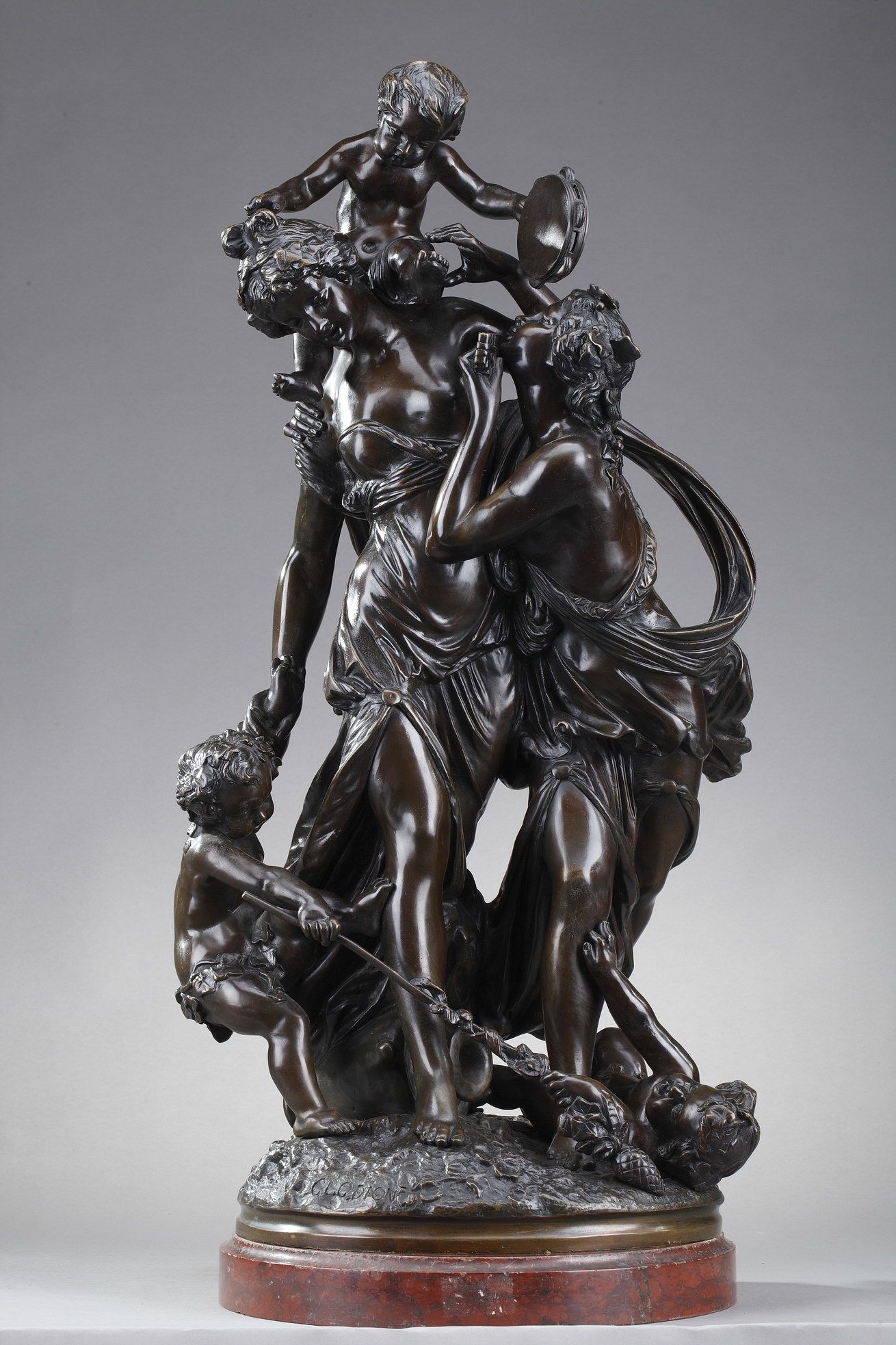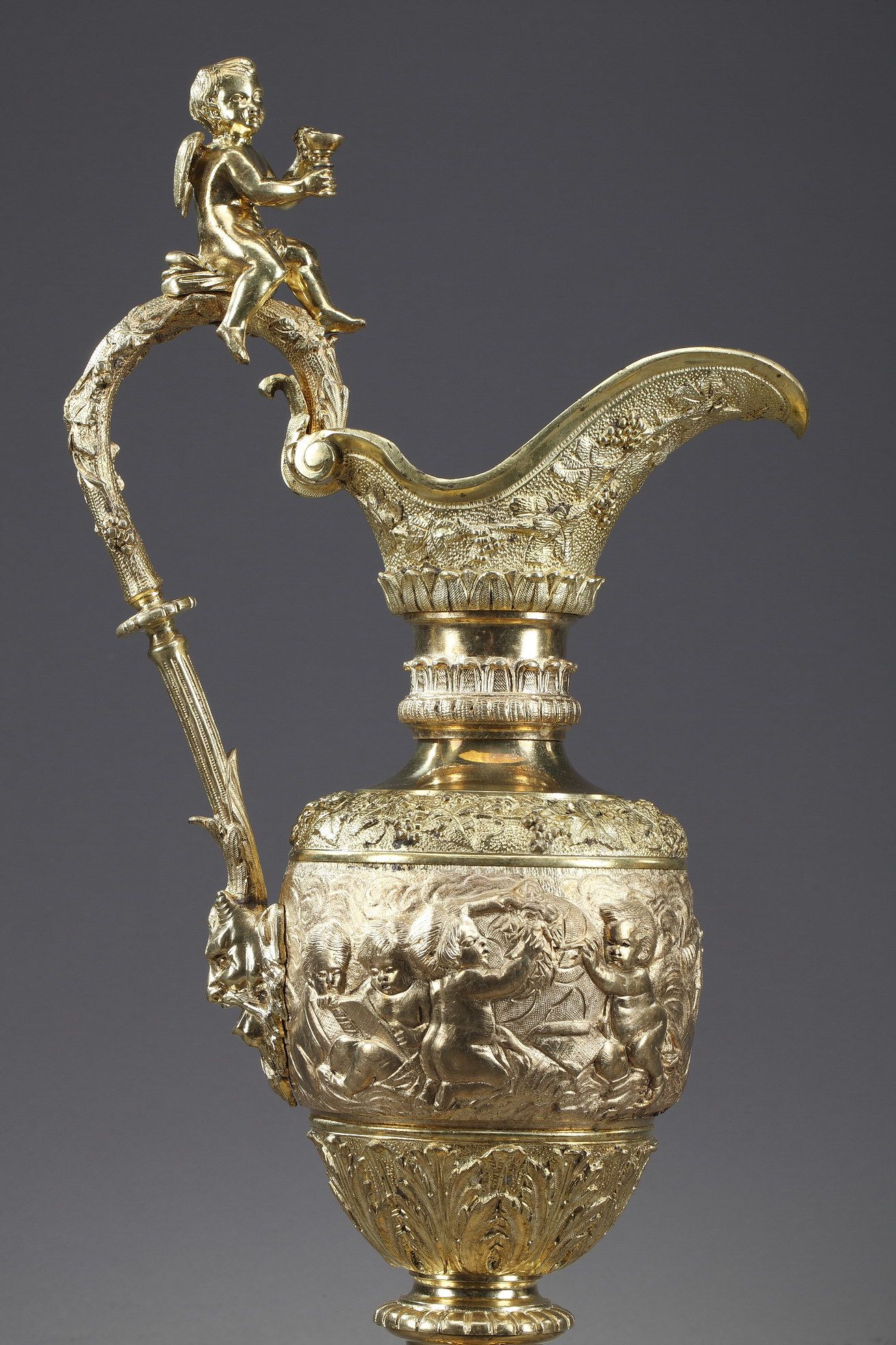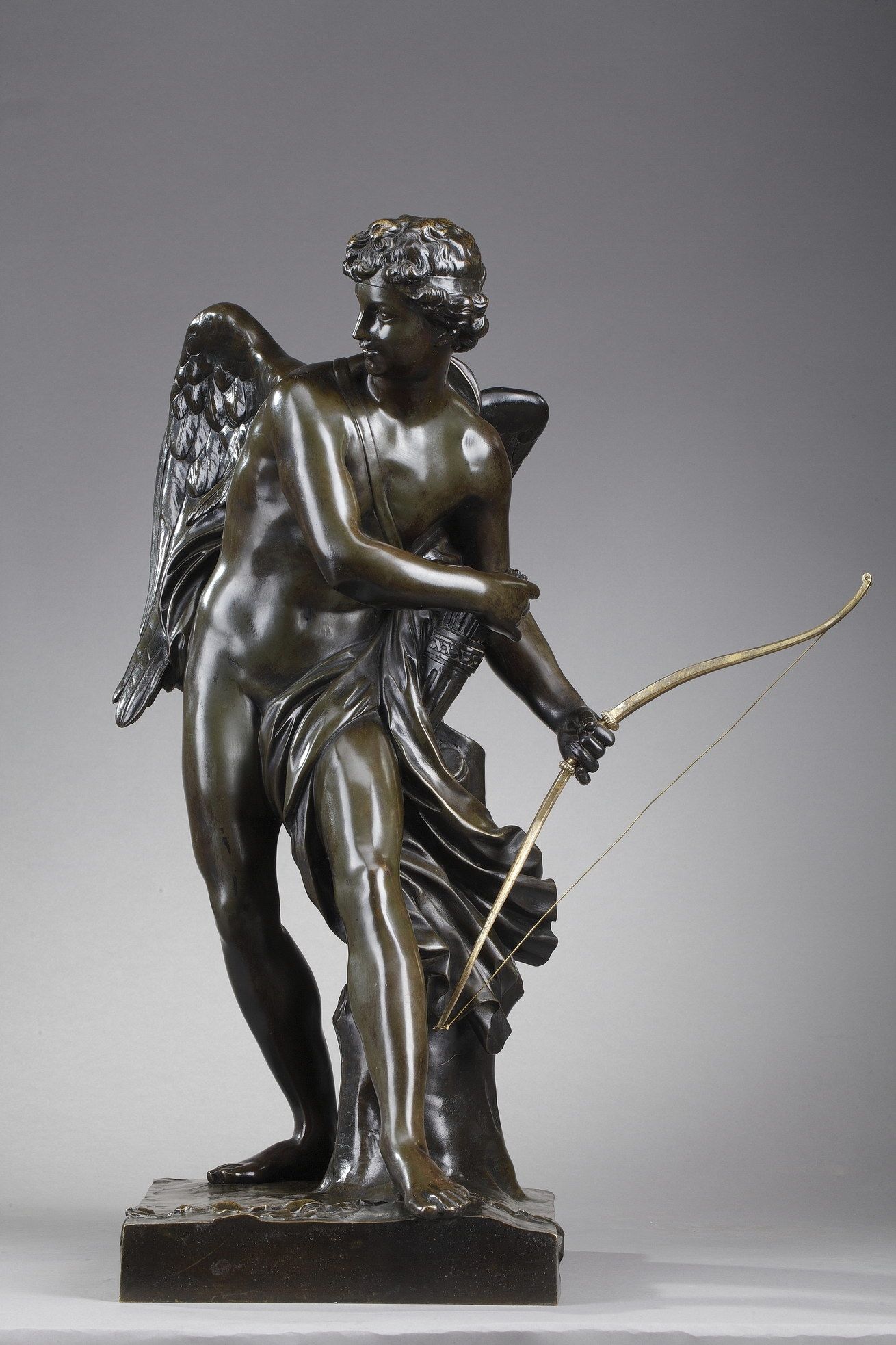"Eight mahogany chairs lined up against the white-painted panelling. An old piano supported, under a barometer, a pyramidal pile of boxes and cartons. Two tapestry bergères flanked the Louis XV-style yellow marble fireplace. The clock in the middle depicted a temple of Vesta (...)."
Gustave Flaubert, A Simple Heart, 1877.
Bourgeois interiors and the vogue for antique subjects
In the 19th century, the bourgeoisie enjoyed a flourishing situation, and this social success was expressed in the salon's decorative elements: stylish furniture, the piano and the marble fireplace housing the clock decorated with antique or mythological subjects .
representing Amour et Psyché after Claude Michallon
The Renaissance and the rediscovery of classicism
Mythology was a theme enthusiastically embraced by Renaissance and Baroque artists, who filled walls, ceilings and palace decorations with legendary figures from the classical pantheon. In France under Louis XV, mythological figures rubbed shoulders with curved lines, rocaille and exotic themes.
Pair of bronze sculptures "Mercury" and "Fortune" after Jean de Bologne, Renaissance artist
Antiquity revisited: Neo-classicism
Around 1750, a taste for antique subjects was born in France. This artistic movement, known as neoclassicism, was based, among other things, on the use of a decorative repertoire drawn from Greco-Roman history and mythology, such as the Bacchic myth. The 19th century continued this fascination with classicism and ancient civilization, to the point of making it a doctrine, a style.
"Bacchantes and dancing putti" in bronze after Clodion
From the Renaissance onwards, Western art borrowed models from Greco-Roman antiquity for four centuries. Mythological figures and groups decorated lamps, clocks, chests, bowls, candelabras and services in porcelain or enamel produced by Sèvres and other European manufacturers. Furnishing objects decorated with antique subjects were synonymous with "good taste", and very fashionable right up to the end of the 19th century.
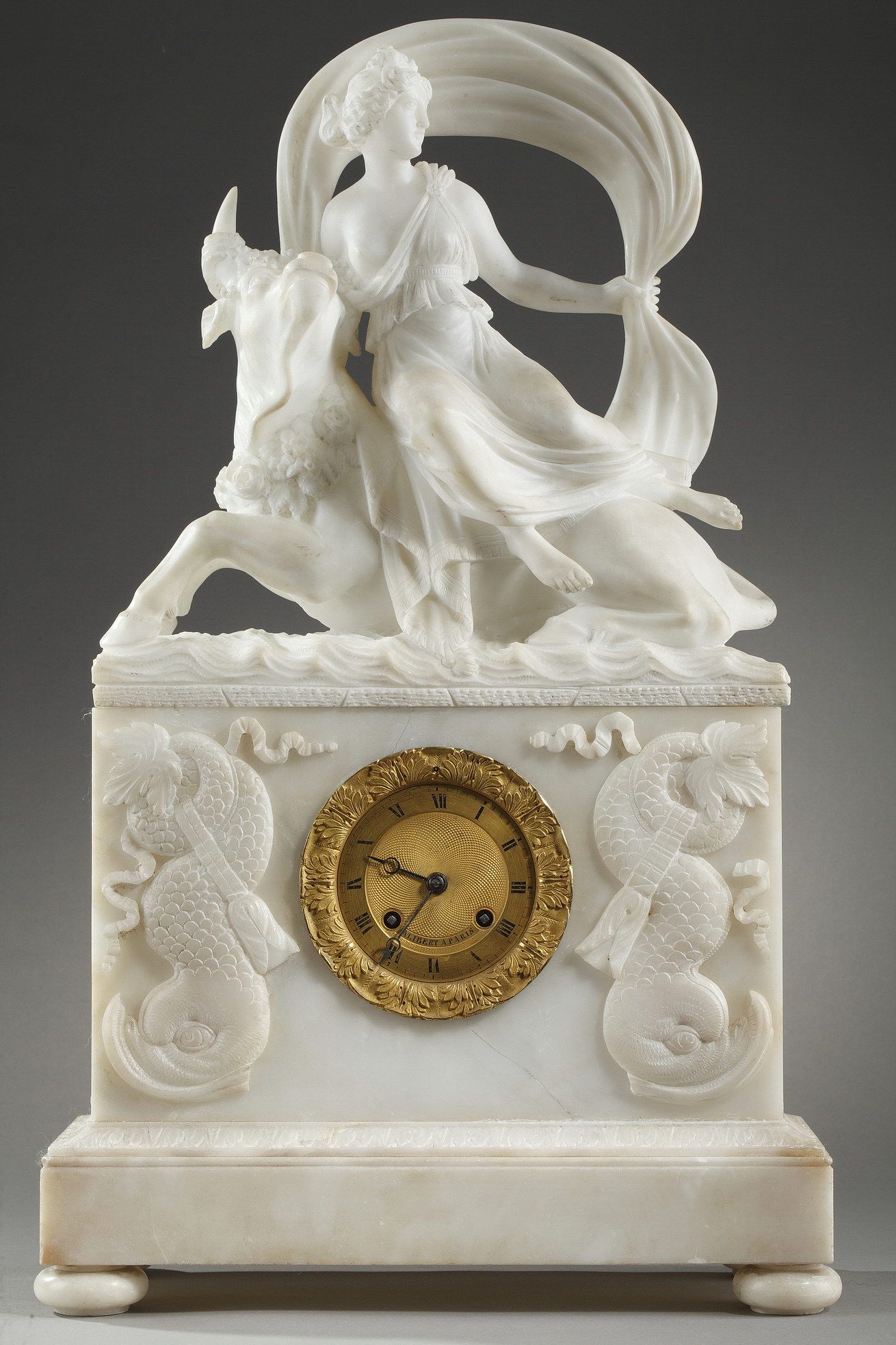 Restoration-period alabaster clock, The Abduction of Europa
Restoration-period alabaster clock, The Abduction of Europa
Ancient gods
 Detail of Diane chasseresse in bronze by Mathurin Moreau
Detail of Diane chasseresse in bronze by Mathurin Moreau
The legends of Psyche, Diana the Huntress, Mercury and Bacchus were among the artists' favorite subjects. Groups of nymphs and satyrs, Leda and Zeus as swans were produced in large numbers in bronze, marble or terracotta.
Ancient heroes and literary sources
In addition to the gods and goddesses of the Greek and Roman pantheons, there were also characters from the Trojan War, theIliad and theOdyssey. Rome, for its part, benefited from sources every bit as prestigious as Homer's two epics, Virgil'sAeneid and Ovid's Metamorphoses. Virgil'sAeneid chronicles the Trojan hero Aeneas, the mythical ancestor of the Roman people. Our two Empire-period engravings depict Aeneas' love affair with Dido, queen of Carthage, and his encounter with Helen, queen of Sparta.
 Helen and Paris embracing in marble and alabaster
Helen and Paris embracing in marble and alabaster
Love and a taste for childhood
But the most widespread motif in the contemporary imagination was certainly the figure ofLove. In bronze, bisque or porcelain, Love takes on the features of a mischievous child. He is often presented in the company of young women playing music or preparing his arrows, as on our Napoleon III period porcelain coffee service.
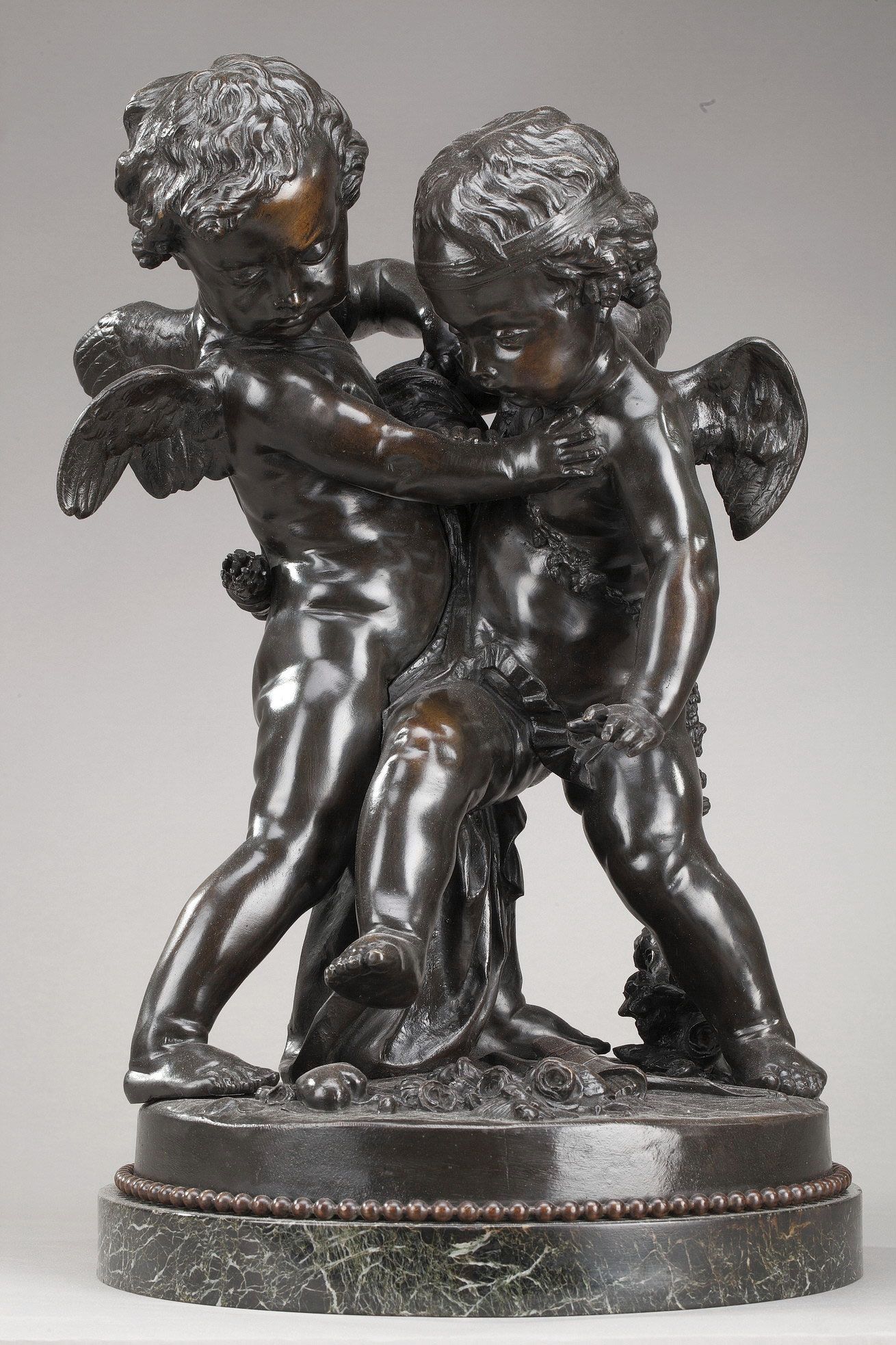 Two lovers disputing a heart in bronze after Etienne-Maurice Falconet
Two lovers disputing a heart in bronze after Etienne-Maurice Falconet
Love is featured in numerous entertainments, sometimes accompanying Venus, Psyche, or the procession of Bacchus. Amours dancing or drinking cups of wine, following Bacchantes on ibexes, adorn candelabras and vases and are the delight of enlightened amateurs.
Our pair of Renaissance-style gilded bronze ewers depicts a procession of putti and Bacchantes celebrating the grape harvest. All carry vines, ivy wreaths and bunches of grapes. They dance, drink and play various musical instruments.
Amour or Cupid is also a pretext for evocations of amorous torment and games of seduction. On this porcelain service from the Empire period, a young woman is probably mourning the loss of her lover, while Amour turns his back and abandons her to her solitude.
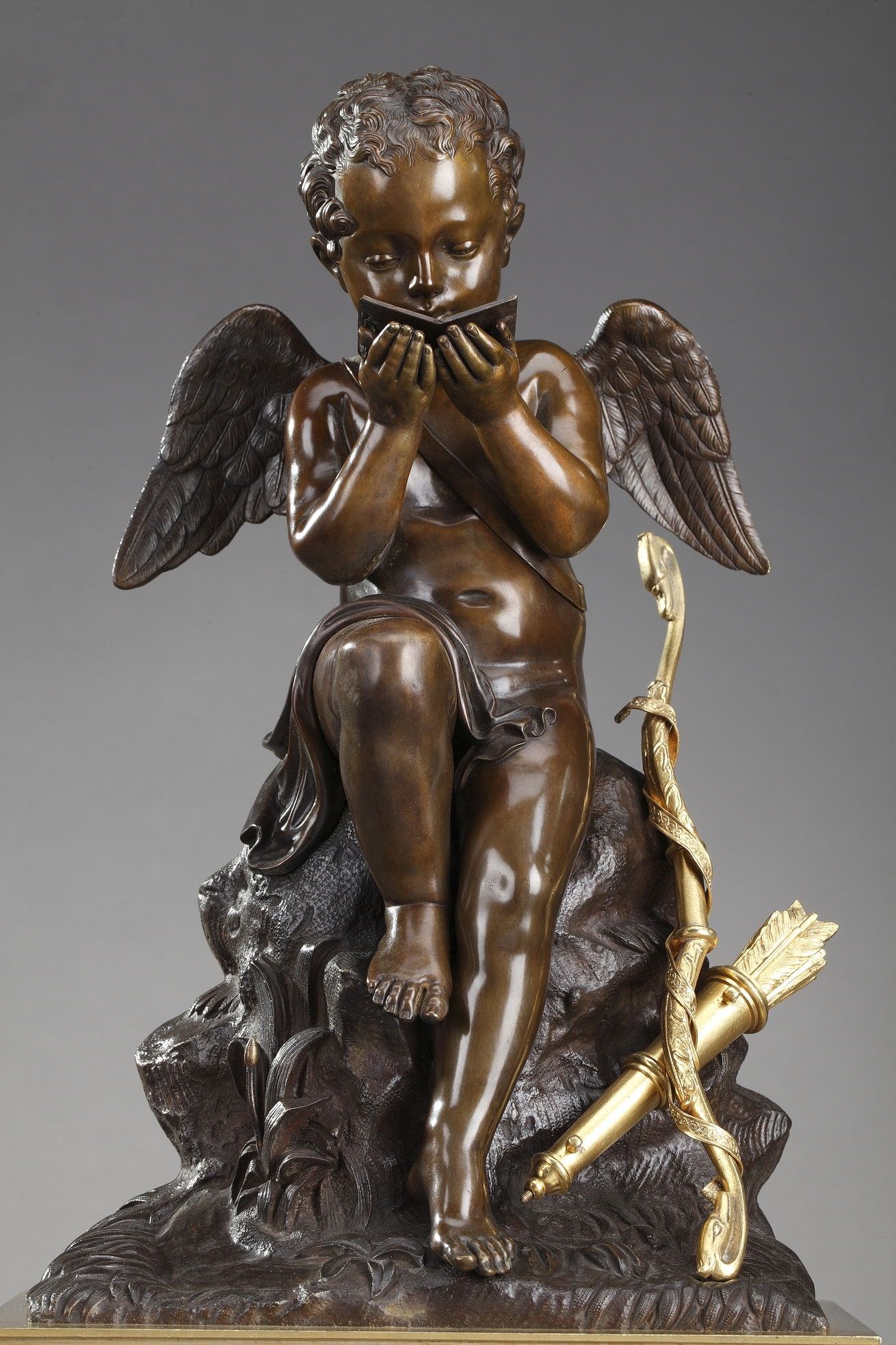 Detail of the Amour lisant clock by Ledure and Hémon
Detail of the Amour lisant clock by Ledure and Hémon
Sometimes Amour is serious and thoughtful, as in L'Amour boudeur by Alfred Boucher or the clock Amour lisant by bronzemaker Ledure and clockmaker Hémon.
But Love was most often depicted in the guise of a happy, laughing child, according to the models favored by the 18th century. Preferring the features of a child, Cupid establishes himself as a touching figure, and seduces with his gallant, erotic form.
More rarely, in the iconographic tradition of Antiquity, he is depicted as theadolescent Eros, as in this bronze sculpture , where he is about to launch an arrow.
From ancient epics to the divinities of the Greek and Roman pantheons, from the heroes sung by Homer and Virgil to the historical figures of classical antiquity, mythological tales have inspired countless artists over the centuries, embellishing furniture and the decor of castles and bourgeois apartments.
Bibliography
- Dawson, Aileen, "Mythologie et allégorie", La Manufacture des Lumières : la sculpture à Sèvres de Louis XV à la Révolution, Dijon, Editions Faton, 2015, pp. 128-164.
- Dupuy-Baylet, Marie-France, "Les pendules des premières années du XIXe siècle et leur cortège d'objets mobiliers", in L'Estampille - Objet d'art, n° 314, June 1997, pp. 76-82.
- Impelluso, Lucia, Dieux et héros de l'Antiquité, Paris, Editions Hazan, 2013.
- Lièvre-Crosson, Du classicisme à l'académisme, Editions Milan, 2008.
- "Le triomphe du goût à la grecque dans les arts décoratifs français (1750-1775)", in L'Estampille - Objet d'art, n° 432, February 2008, pp. 66-79.





